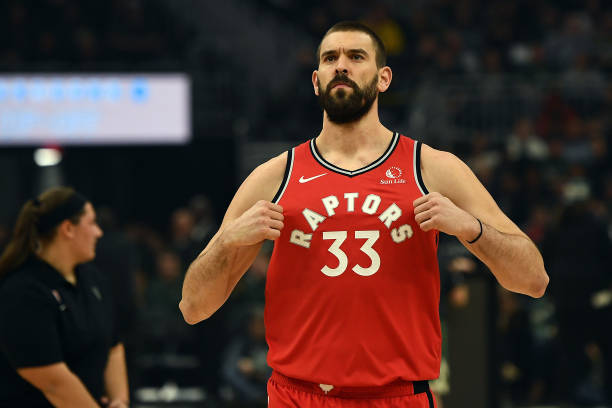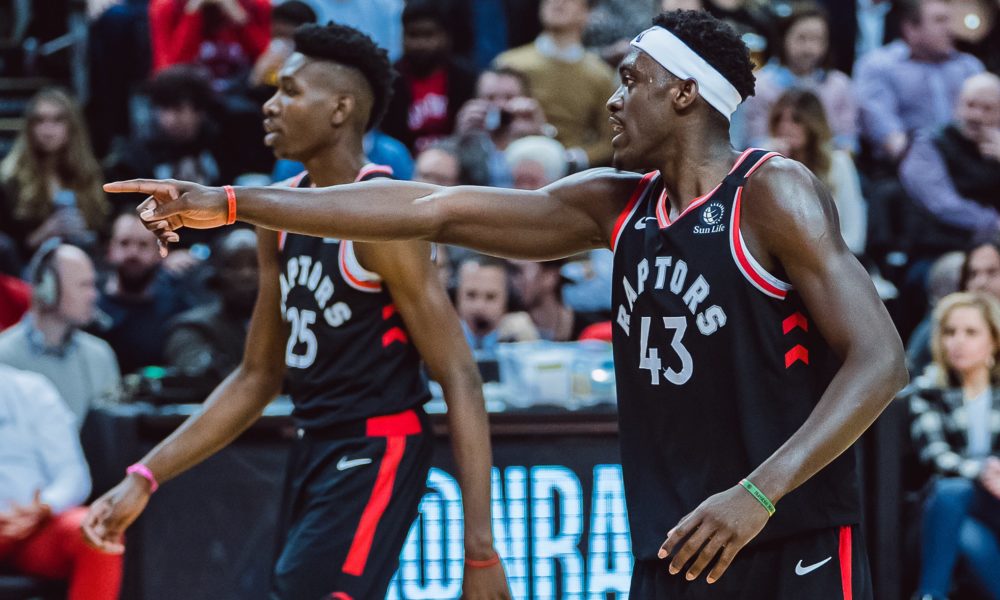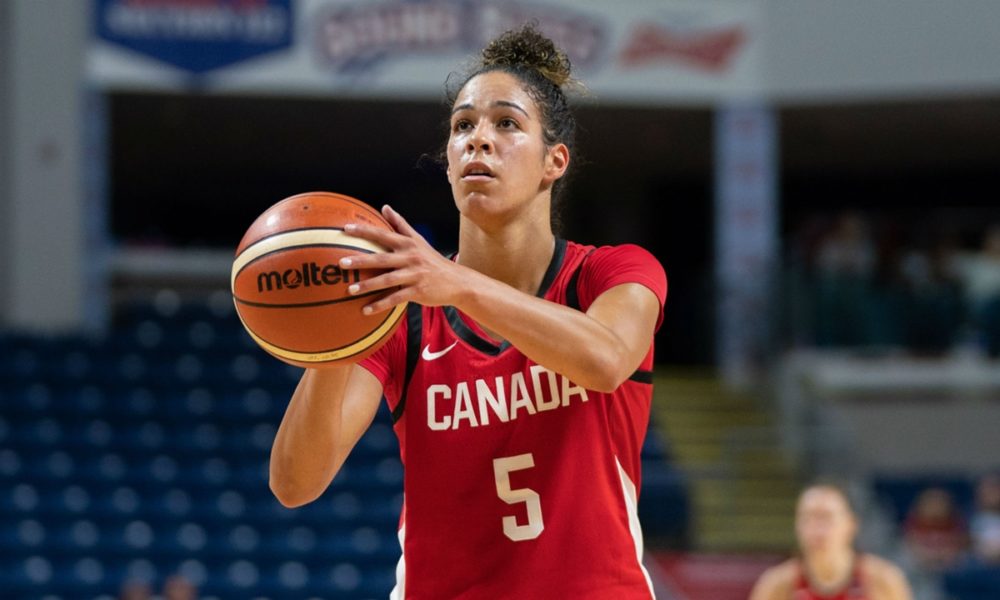As the Toronto Raptors celebrated their franchise-record 12th straight victory over the Indiana Pacers Wednesday night, one player was particularly jubilant.
Marc Gasol, who is battling a hamstring injury, celebrated with his teammates on the sideline, as the historic number 12 flashed over the Scotiabank Arena jumbotron.
The feats Gasol achieved over the past year; winning an NBA championship, securing gold for Spain at the FIBA World Championships, adding to an already stellar legacy.
These accomplishments contrast the Marc Gasol who was on the trading block, one year ago.
It is hard not to be reflective about that trade deadline move the Raptors made last season. Sure, the Kawhi Leonard trade captured headlines as Raptors President Masai Ujiri gambled on an injured player getting back to superstar status.
But bringing in Marc Gasol transformed this Raptors team into one that could not only score but play ferocious, lock-down defense.
The ingredients that paved the way for the historic Raptors championship run.
***
The Raptors day 39-16 heading into last season’s trade deadline. Sitting second in the Eastern Conference, this team still had question marks.
Would Kawhi’s “load management” strategy pay off? Do the Raptors have the pieces to beat a premier opponent?
Standing pat at the trade deadline was an option. The Raptors possessed enough talent to be a competitive playoff team.
But maintaining the status quo did not interest Ujiri. Finding a way to bring a championship to Toronto was his ultimate goal. He demonstrated his willingness to make a big move to improve the team, trading Demar DeRozan to the San Antonio Spurs for Leonard.
On February 8th, 2019, Ujiri and Raptors GM Bobby Webster made the big trade deadline splash. They sent center Jonas Valanciunas, guards Delon Wright and C.J. Miles, as well as a 2024 second-round pick to the Memphis Grizzlies, for three-time All-Star Marc Gasol.
The trade demonstrated Ujiri’s blueprint as an executive. He disregarded Valanciunas’ legacy with the Raptors as their big man during the playoff runs preceding 2019.
The move, plain and simple, was about winning.
Through 53 games for the Grizzlies, Gasol averaged 15.7 PPG, with a 54.1 true shooting percentage. On the flip side, Valanciunas recorded 12.8 PPG through 26 games played with the Raptors. While the former Raptor center crashed the glass and picked up rebounds (7.2 RPG in 2018-19), Valanciunas’ defense in critical moments suffered.
So much so that Raptors head coach Nick Nurse benched Valanciunas in the fourth quarter for many games.
***
The Raptors management knew the caliber of player they were acquiring when bringing in Gasol. A member of the 2012-13 NBA All-Defensive Team and the Defensive Player of the Year, Gasol turned the Raptors defense into an elite unit.
He plays an important role in the Raptors pick and roll offense. His 6’foot’11 size makes his length difficult to contain, whether it is in the post or against an opposing team’s pick and roll. Gasol can also protect the rim while finding his teammates in the high post for scoring chances. Gasol’s vision allows to find his players in open spots and his passing is one of the best among centers.
Serge Ibaka, the Raptors backup center, credits Gasol for teaching him how to become a better passer.
“As a big, when I see him, he really inspired me to work on my passing,” said Ibaka on Wednesday to reporters after the Raptors 119-118 over the Pacers. “When I see the way he passes, he always helps our team, so when I step on the court I have to make sure I keep the same vibe.”
Gasol’s Raptors tenure got off to a slow start. He generated 9.1 PPG through the 26 games played for the Raptors last season. But it was his defense, particularly his ability to shut down an opposing team’s best players, that made Gasol impactful during the Raptors playoff run. Whether it was containing Joel Embiid of the Philadelphia 76ers (37 FG%) or Giannis Antentokounmpo (44.8 FG%) of the Milwaukee Bucks, Gasol’s length limited these big men from getting space in the paint to score easy baskets.
***
In the NBA Finals, Gasol expressed his offensive talents along with his fervent defense. Averaging 12 PPG over the course of the six-game series against the Golden State Warriors, the Raptors center created offense through the pick and roll, spacing the floor to find his teammates or with his mid-range jump shot. It speaks to Gasol’s growth as a player, not just being a defensive force, but also one who can score timely points.
As Gasol still recovers from injury, the Raptors possess the NBA’s second-best defense (104.6 defensive rating). They are second in the eastern conference, with a franchise-setting 37-14 record through 51 games.
Big Spain Dimes > pic.twitter.com/qCFoMTVedA
— Toronto Raptors (@Raptors) November 26, 2019
There is no doubt Gasol fits within Nurse’s system. Whichever strategy the Raptors employ on the floor, Gasol can adapt. But more importantly, it is Gasol’s intangibles that have contributed to the Raptors championship pedigree. He is an active communicator on the floor while an inspiring motivator to his teammates away from the court.
Nurse understands the importance of Gasol and why his trade to the Raptors launched the team into becoming a serious championship contender.
“He’s a unique person,” said Nurse after the Raptors won their championship. “The main things he brought to us of the team sense of what we thought we could become. After a few games, we said, “This guy is good, he’s smart and he can pass.” We are better and we could become really good.”



